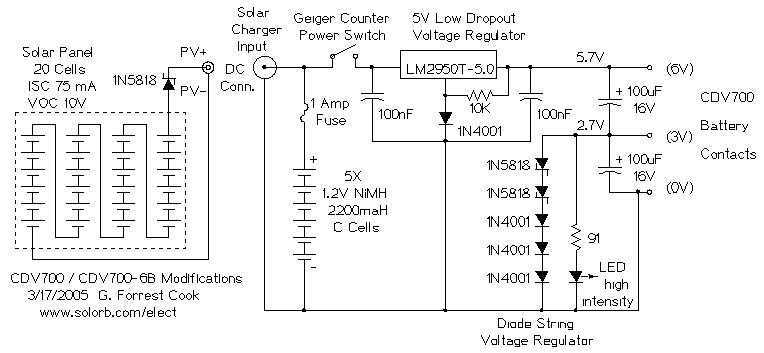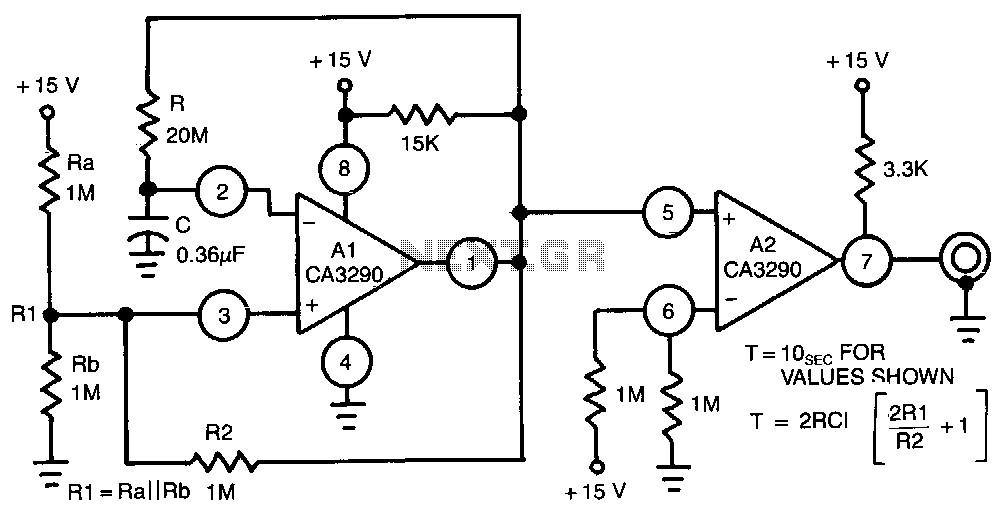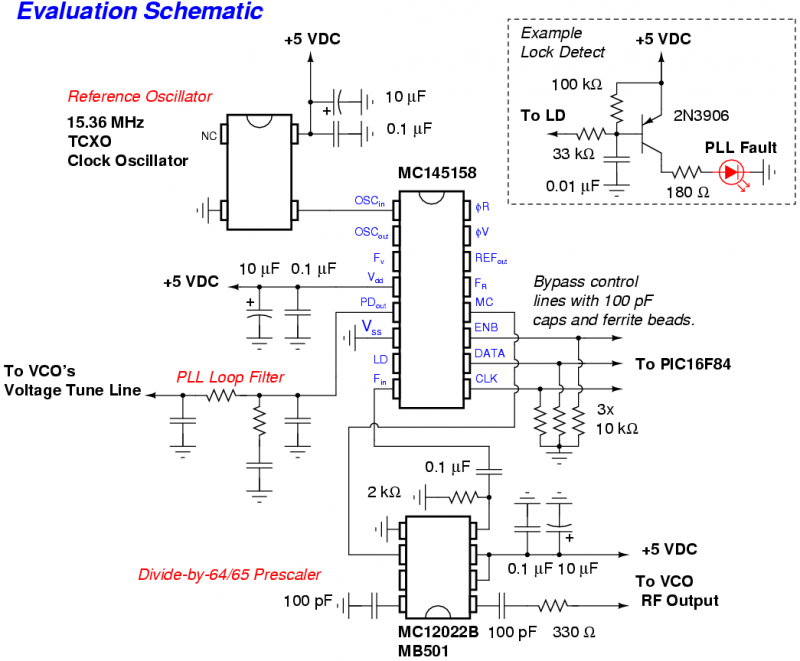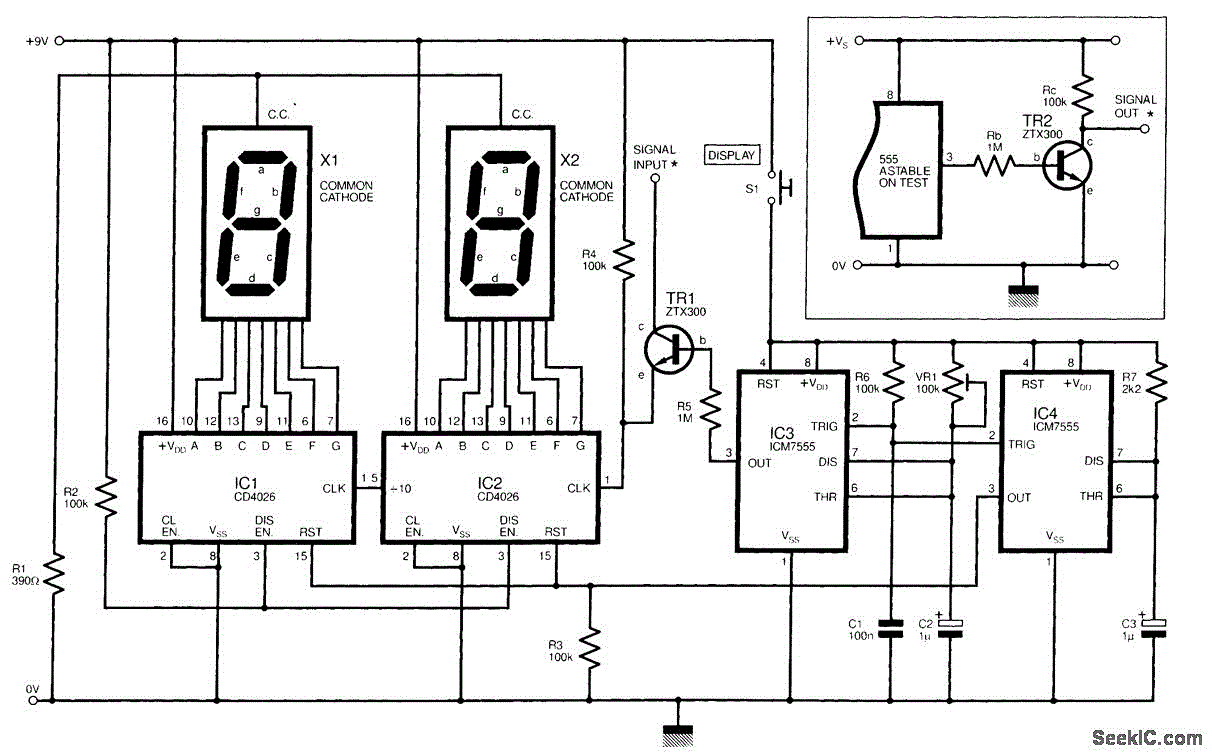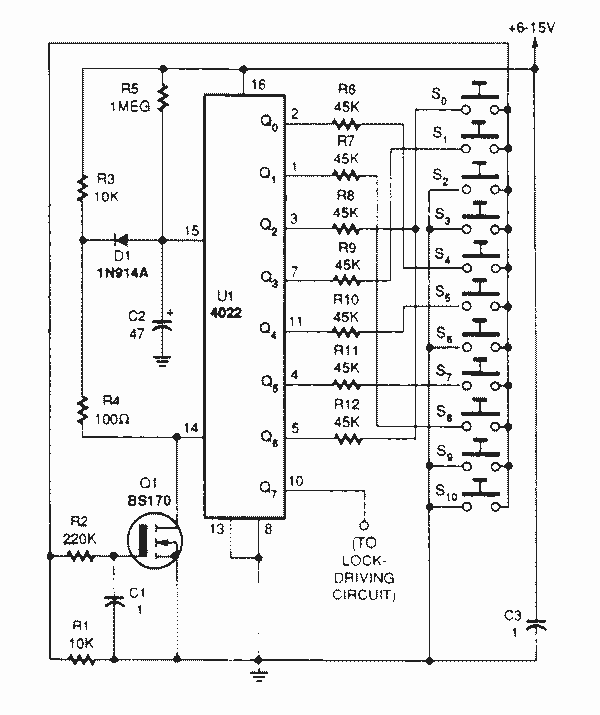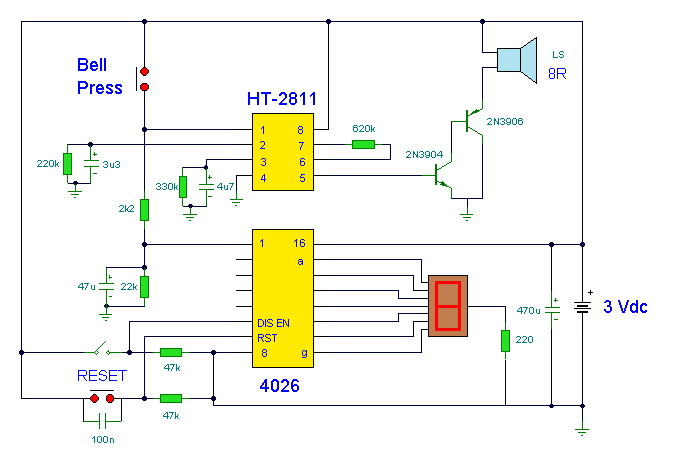
frequency counter
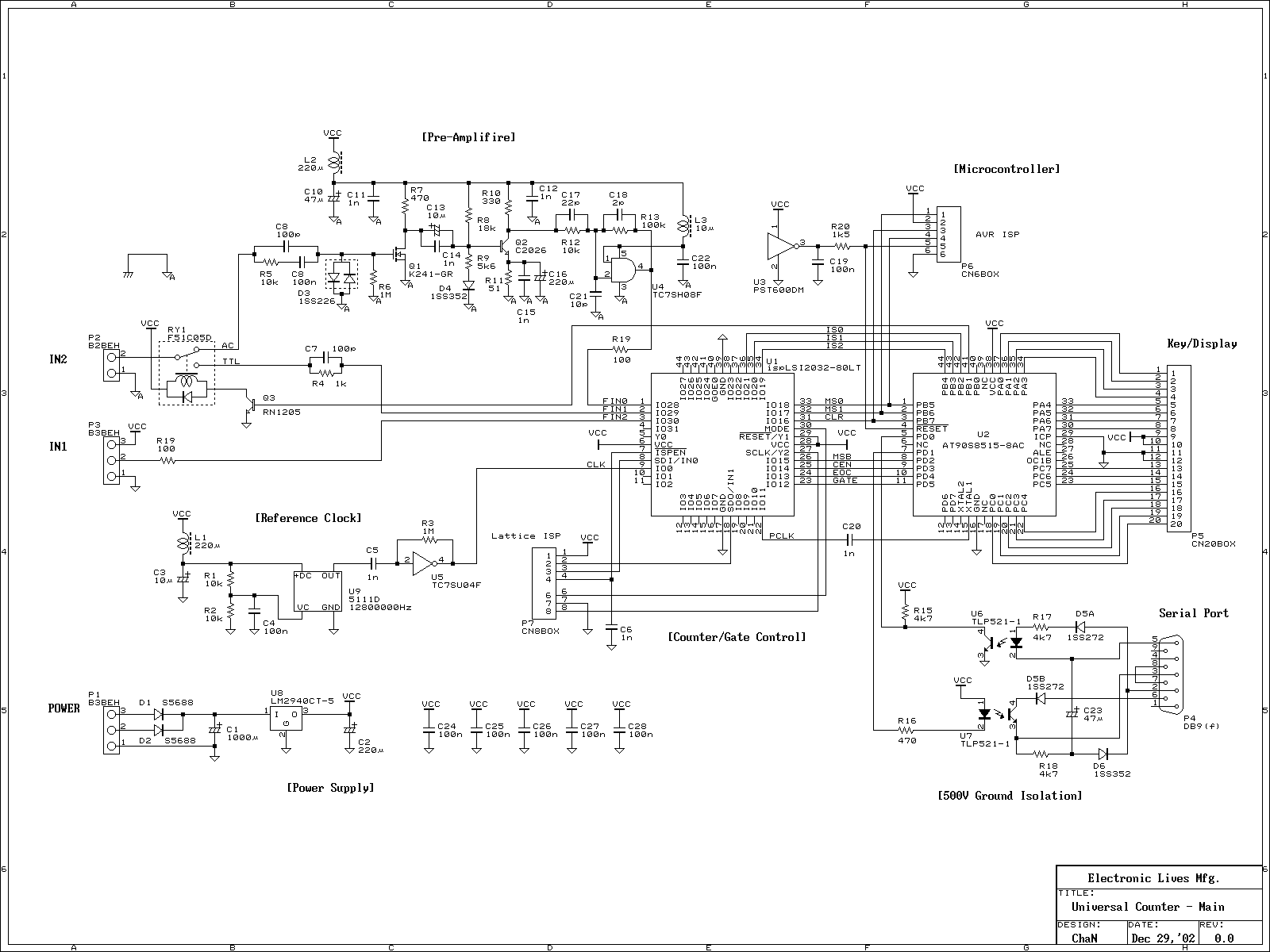
The frequency counter is the most popular instrument in home-made instruments. The reason it is built widely is that it can be built easily because it is a digital circuit, it is a generic measurement, and many construction kits are available. Many electronics hobbyists will experience building any frequency counter. This project is a second trial. However, building two ordinary frequency counters is not smart, so some additional functions were implemented to the frequency counter. The function is not that abundant compared to a generic universal counter; however, it can measure pulse period/width besides frequency. This project is named "Universal Counter." The frequency means the number of electrical or mechanical vibration cycles per unit time. Hz (hertz) is used as a unit of frequency and is defined as an SI unit, meaning the number of cycles per second. For example, when 100 cycles are counted per second, it is 100 Hz. Formerly, c/s was used as a unit of frequency. When counting the number of cycles of the input signal for one second, the value of frequency can be obtained in the counter. This can be realized by a simple counter circuit, which is the conventional frequency measuring method. Many counter ICs have been released, and many frequency counters that work using this method are being shipped now. An AT90S8515 is used for the controller because it is very easy to use. The control processes are counting, displaying, and communicating mainly. They are not that complex; any other microcontroller, such as 8051, H8, and 78K, can be used instead. This is the simplest method, but the measuring resolution is limited at low frequency. To ensure more resolution, the gate time must be expanded: for example, when measuring at a resolution of 1 mHz, 1000 seconds is needed to measure one time. Every measuring method needs to control a clock signal. However, using an AND gate, as shown in the diagram of principle, will incur an extra count. The error rate depends on the duty ratio of the clock signal; for example, a symmetrical clock signal incurs an average of +0.5 counts. This cannot be ignored in certain circumstances. At a high frequency of several MHz, this will not affect measuring accuracy; however, an input signal of 99.7 Hz could result in 100 or 101 Hz, which is not acceptable.
This problem can be avoided by using a synchronous counter instead. In this circuit, the rate of an extra count depends only on a fractional number of less than 1, meaning the clock duty ratio does not affect the extra count. However, the synchronous counter can encounter abnormal operation due to asynchronous input that does not guarantee setup and hold times. To avoid this problem, precautions, such as separating counter stages to insulate most synchronous blocks or synchronizing control signals with the clock to prevent errors, should be taken. A frequency measurement system realized in a digital counting circuit is typically referred to as a "Frequency Counter."
The described frequency counter project features a digital architecture that allows for the measurement of frequency, pulse width, and pulse period. The core of the design utilizes an AT90S8515 microcontroller, which handles the counting, displaying, and communication functions effectively. The circuit can be expanded using additional microcontrollers if required, providing flexibility for different applications.
The frequency measurement process is based on counting the number of cycles of an input signal over a defined period. This method is straightforward and relies on the principle of digital counting, where the input signal is fed into a counter IC that tallies the cycles. The project also addresses the limitations of conventional counting methods, particularly at low frequencies, by implementing a longer gate time for improved resolution.
One critical aspect of this design is the use of a synchronous counter to mitigate the issues associated with extra counts caused by clock duty ratios. This ensures that the frequency readings are accurate and reliable, particularly in scenarios where the input frequency is close to the counting threshold. The design emphasizes proper synchronization and isolation of counter stages to prevent erroneous readings due to asynchronous inputs.
Overall, this universal counter project represents a versatile and practical solution for frequency measurement, suitable for both hobbyists and more advanced applications in electronics. The inclusion of additional measurement capabilities beyond simple frequency counting enhances its utility in various electronic projects.The frequency counter is the most popular instrument in the home maid instruments. I think that the reason why it is built widely is: it can be built easily because it is digital circuit, it is generic measurement and many construction kits are available. Many electronics hobbyists will experienced to build any frequency counter. This project is second trial for me. But building two ordinaly frequency counter is not smart so that some additional functions ware impremented to the frequency counter.
The function is not that abundant compared to generic universal counter however it can measure pulse period/width besides frequency, I named this project "Universal Counter". The Frequency means number of electrical or mechanical vibration cycles per unit time, to explain this might not be needed now... Hz (hertz) is used for a unit of the frequency and is defined as an SI unit, and it means number of cycles per second: e.g.
when 100 cycles are counted per a second, it is 100 Hz. Formarly c/s was used for unit of the frequency. When count number of cycles of the input signal for one second, the value of frequency can be got in the counter. This can be realized by simple counter circuit so that this was the conventional frequency measureing method.
Many counter IC have been released and many frequency counters thak work in this method are being shipped now. An AT90S8515 is used for the controller because it is very easy to use. The control process are conting, displaying and communicating mainly. They are not that complex, any other microcontroller, such as 8051, H8 and 78K, will able to be used instead.
This is the simplest method but the measureing resolution is limited at low frequency. To ensure more resolution, the gate time must be expanded: e.g. when measure at resolution of 1 mHz, 1000 seconds is needed to measure one time. Every measureing method needs to control any clock signal. However using an AND gate that shown in the diagram of principle will occure an extra count. The error rate depands on the duty ratio of the clock signal: e.g. simmetrical clock signal occures +0.5 counts average. This cannot be ignored according to circumstance. At high frequency of several MHz, this will not affect measureing accuracy, however input signal of 99.7Hz results 100 or 101 Hz is not good. This problem can be avoided by using a synchronous counter instead. In this circuit, the rate of an extra count depends on only fractional number of less than 1, the clock duty ratio doesn't affect to the extra count.
However the synchronous counter can occure any abnormal operation due to asynchronous input that is not guaranteed ts and th. To avoid this problem, any care, such as separating counter stages to insurate most synchronous block or synchronizing control signals with clock to avoid that error, should be taken on this point.
A frequency measurement system which is especially realized in digital counting circuit seems being called "Frequency Counter". 🔗 External reference
This problem can be avoided by using a synchronous counter instead. In this circuit, the rate of an extra count depends only on a fractional number of less than 1, meaning the clock duty ratio does not affect the extra count. However, the synchronous counter can encounter abnormal operation due to asynchronous input that does not guarantee setup and hold times. To avoid this problem, precautions, such as separating counter stages to insulate most synchronous blocks or synchronizing control signals with the clock to prevent errors, should be taken. A frequency measurement system realized in a digital counting circuit is typically referred to as a "Frequency Counter."
The described frequency counter project features a digital architecture that allows for the measurement of frequency, pulse width, and pulse period. The core of the design utilizes an AT90S8515 microcontroller, which handles the counting, displaying, and communication functions effectively. The circuit can be expanded using additional microcontrollers if required, providing flexibility for different applications.
The frequency measurement process is based on counting the number of cycles of an input signal over a defined period. This method is straightforward and relies on the principle of digital counting, where the input signal is fed into a counter IC that tallies the cycles. The project also addresses the limitations of conventional counting methods, particularly at low frequencies, by implementing a longer gate time for improved resolution.
One critical aspect of this design is the use of a synchronous counter to mitigate the issues associated with extra counts caused by clock duty ratios. This ensures that the frequency readings are accurate and reliable, particularly in scenarios where the input frequency is close to the counting threshold. The design emphasizes proper synchronization and isolation of counter stages to prevent erroneous readings due to asynchronous inputs.
Overall, this universal counter project represents a versatile and practical solution for frequency measurement, suitable for both hobbyists and more advanced applications in electronics. The inclusion of additional measurement capabilities beyond simple frequency counting enhances its utility in various electronic projects.The frequency counter is the most popular instrument in the home maid instruments. I think that the reason why it is built widely is: it can be built easily because it is digital circuit, it is generic measurement and many construction kits are available. Many electronics hobbyists will experienced to build any frequency counter. This project is second trial for me. But building two ordinaly frequency counter is not smart so that some additional functions ware impremented to the frequency counter.
The function is not that abundant compared to generic universal counter however it can measure pulse period/width besides frequency, I named this project "Universal Counter". The Frequency means number of electrical or mechanical vibration cycles per unit time, to explain this might not be needed now... Hz (hertz) is used for a unit of the frequency and is defined as an SI unit, and it means number of cycles per second: e.g.
when 100 cycles are counted per a second, it is 100 Hz. Formarly c/s was used for unit of the frequency. When count number of cycles of the input signal for one second, the value of frequency can be got in the counter. This can be realized by simple counter circuit so that this was the conventional frequency measureing method.
Many counter IC have been released and many frequency counters thak work in this method are being shipped now. An AT90S8515 is used for the controller because it is very easy to use. The control process are conting, displaying and communicating mainly. They are not that complex, any other microcontroller, such as 8051, H8 and 78K, will able to be used instead.
This is the simplest method but the measureing resolution is limited at low frequency. To ensure more resolution, the gate time must be expanded: e.g. when measure at resolution of 1 mHz, 1000 seconds is needed to measure one time. Every measureing method needs to control any clock signal. However using an AND gate that shown in the diagram of principle will occure an extra count. The error rate depands on the duty ratio of the clock signal: e.g. simmetrical clock signal occures +0.5 counts average. This cannot be ignored according to circumstance. At high frequency of several MHz, this will not affect measureing accuracy, however input signal of 99.7Hz results 100 or 101 Hz is not good. This problem can be avoided by using a synchronous counter instead. In this circuit, the rate of an extra count depends on only fractional number of less than 1, the clock duty ratio doesn't affect to the extra count.
However the synchronous counter can occure any abnormal operation due to asynchronous input that is not guaranteed ts and th. To avoid this problem, any care, such as separating counter stages to insurate most synchronous block or synchronizing control signals with clock to avoid that error, should be taken on this point.
A frequency measurement system which is especially realized in digital counting circuit seems being called "Frequency Counter". 🔗 External reference
